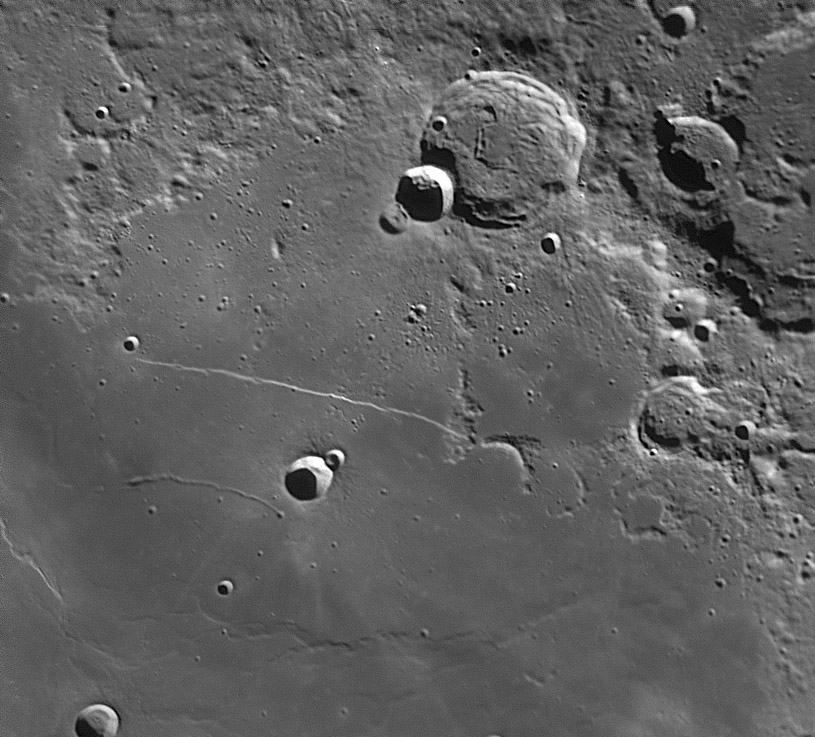
image by Mike Wirths
When craters are formed by themselves on a flat piece of mare they have standard predictable interior features such as terraces and central peaks. But some craters have the misfortune of forming on the rim of a pre-existing one, which commonly causes deviation from the standard morphology Thebit A, the 20 km wide crater overlapping Thebit (top), cleanly cuts the larger crater’s rim. It is possible that some of the debris on the floor of Thebit near A was rim material that was destroyed and slid downward. Thebit A has a smaller crater just at the edge of its rim. The little guy, Thebit L, looks less bright than A and seems like it should be older, but the shared rim raises questions. As shown on Mike’s great shot, and with opposite lighting on Lunar Orbiter IV, it is unclear if A or L is younger. I think L might be because on the Orbiter image A is seen to have some mounds on its inner wall that could have been dislodged from A’s rim when L formed. Follow that? And before we leave this area, what has happened to the floor of Thebit? Where is its central peak and what is the angular ridged-rille feature? Across a little bit of mare is Birt and its rim-biting crater A. Here 6.8 km wide A cuts the wall of Birt and there appears to be a small slump on Birt’s inner wall where some of its original rim crest may have moved downward. And inside Birt A is a curved slump mass that looks like part of its wall has also been dislocated. The actual movement of rim pieces here is still unclear - perhaps SMART-1 or a high, high res amateur view will tell us what happened.
Oh yes, there are some other details of passing interest in this image…
Technical Details:
August, 2006. 18″ Starmaster + camera Lumenera Infinity 2-2 + 2.5X Powermate barlow + red filter.
Related Links:
Rükl charts 54 & 55
Yesterday's LPOD: Pitted Softness
Tomorrow's LPOD: Copernicus in Color
COMMENTS?
Register, Log in, and join in the comments.



